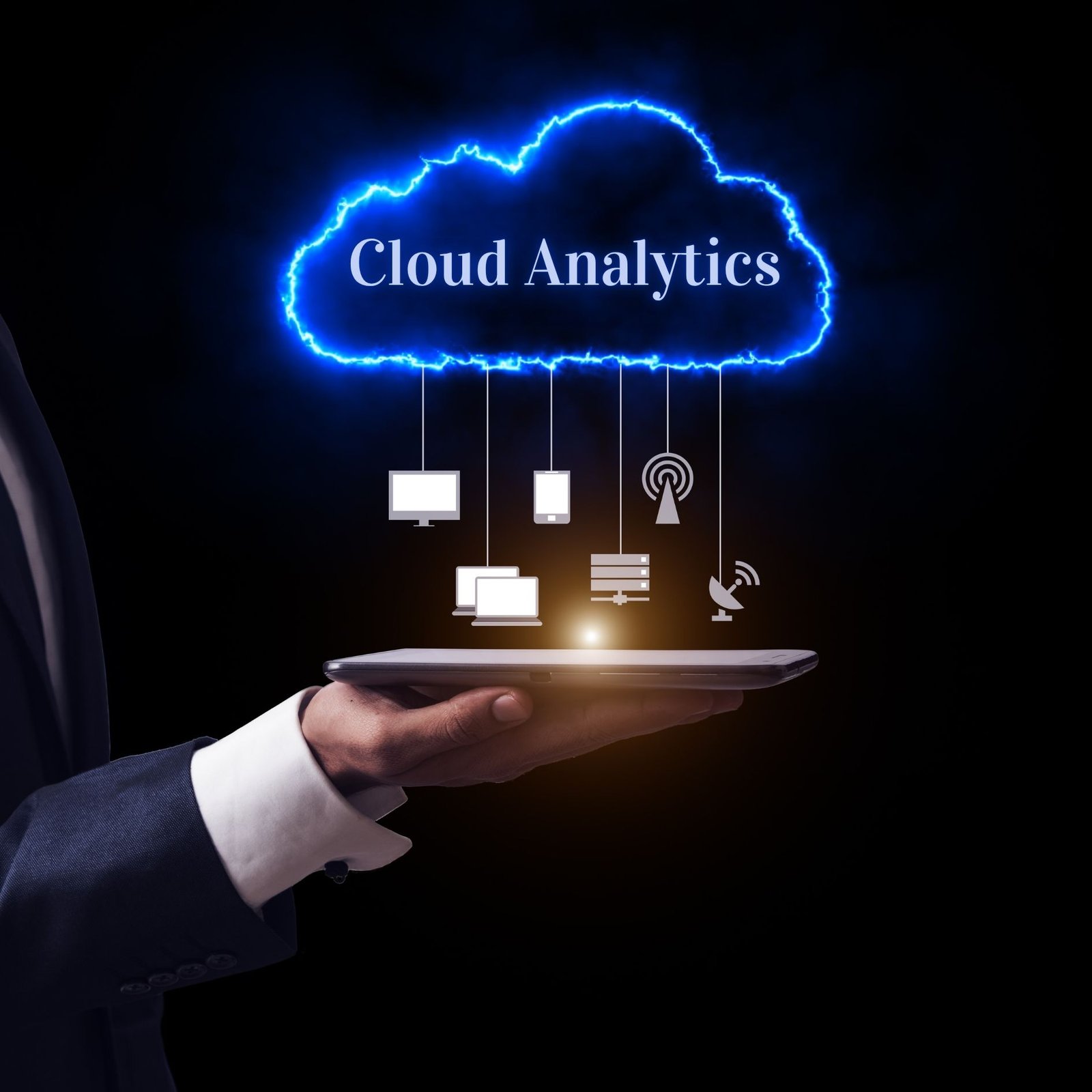Table of Contents
In today’s world, every business big or small runs on data. From customer behavior to sales performance, data helps organizations make smarter decisions. But with the massive amount of information generated every day, traditional analytics tools can no longer keep up.
That’s where Artificial Intelligence (AI) and Machine Learning (ML) come in. Together, they’re transforming cloud analytics into something far more powerful not just analyzing what’s already happened, but predicting what will happen next.
Let’s explore how AI and ML are completely reshaping cloud analytics and why this evolution matters for modern businesses.
1. Turning Data into Actionable Intelligence
In the past, cloud computing was mainly about storing data safely and cutting down infrastructure costs. But the cloud has evolved. Thanks to AI and ML, it’s no longer just a place to store data it’s now a system that can learn, analyze, and provide actionable insights.
AI-powered cloud platforms can automatically identify trends, detect anomalies, and make recommendations. This means businesses no longer need to rely solely on manual analysis. The system itself can process massive datasets and help leaders make decisions faster and more accurately.
For example, an e-commerce company can use AI to identify which products are trending and adjust its marketing strategies instantly. It’s all about moving from data collection to intelligent action.
2. The Power of Predictive Analytics
Predictive analytics is one of the most exciting outcomes of combining AI and ML with cloud analytics. Instead of reacting to what already happened, businesses can forecast future events using historical data.
Machine learning models analyze patterns and predict trends whether it’s customer preferences, product demand, or potential risks.
Here’s what that looks like in real life:
- Retailers can forecast seasonal sales trends and stock inventory accordingly.
- Banks can spot fraud by detecting unusual transaction patterns.
- Manufacturers can predict when machines are likely to break down before it actually happens.
By embedding AI and ML into cloud analytics platforms like Microsoft Azure, AWS, or Google Cloud, predictive insights are now available even to small and mid-sized businesses no data science degree required.
3. Real-Time Analytics for Faster Decision Making
Today, speed is everything. Businesses that can react faster gain a competitive edge and that’s exactly what AI-driven cloud analytics delivers.
With machine learning models running in the cloud, companies can process and analyze live data streams in real time. Whether it’s customer interactions, IoT device data, or online transactions, insights are generated the moment the data arrives.
Think of a retail site adjusting prices instantly based on user activity or a healthcare app alerting doctors to abnormal patient data in seconds. These examples show how AI enables instant, informed decision-making that can save time, money, and even lives.
4. Smarter and Simpler Data Visualization
Numbers and charts are great, but AI has made data visualization far more meaningful.
Modern tools like Microsoft Power BI, Tableau, and Google Looker Studio now come with AI capabilities that do more than display data they explain it. Users can simply type questions like “Which product performed best last quarter?” and get visual, easy-to-understand answers.
This means that even people without a technical background can explore data, uncover insights, and make confident decisions. AI turns complex analytics into simple storytelling, helping everyone in the organization make smarter choices.
5. AI Strengthens Cloud Security
Security is one of the biggest concerns in cloud environments, and AI is changing the game here too.
AI and ML systems can continuously monitor network behavior, detect suspicious activity, and take automated actions before threats cause damage. Over time, these systems learn from previous attacks, becoming smarter at recognizing patterns and preventing future ones.
For instance, an AI-based security model can detect unauthorized access attempts or unusual traffic in real time. By identifying risks early, businesses can protect their data and maintain trust with customers.
6. Optimizing Costs and Cloud Resources
AI isn’t just about intelligence it’s also about efficiency.
One major benefit of AI and ML in cloud analytics is cost optimization. Cloud platforms can use ML models to automatically scale resources based on demand, ensuring businesses pay only for what they use.
Tools like Azure Cost Management and AWS Auto Scaling help organizations balance performance with affordability. It’s a smart, hands-off way to manage cloud expenses while maintaining speed and reliability.
7. Delivering Personalized Customer Experiences
In today’s competitive landscape, personalization is key to customer loyalty and AI makes that possible.
By analyzing customer data stored in the cloud, AI can predict preferences and deliver highly personalized experiences.
For example:
- Streaming services like Netflix use ML algorithms to recommend shows tailored to each viewer.
- Online retailers display products based on individual browsing and purchase history.
The result? Customers feel understood, and businesses enjoy higher engagement and conversions.
8. The Future of Cloud Analytics Is Intelligent and Autonomous
We’re already witnessing the next evolution of cloud analytics systems that manage themselves.
AI-powered cloud platforms are moving toward autonomous analytics, where algorithms can detect inefficiencies, resolve issues, and optimize performance automatically.
This approach, often referred to as AI Ops (Artificial Intelligence for IT Operations), means less manual monitoring and more proactive performance management. In the near future, businesses will rely on self-learning systems that can make continuous improvements with minimal human input.
9. Why This Matters for Businesses
For any organization that wants to stay competitive, adopting AI and ML in cloud analytics is no longer optional it’s essential.
Here’s why it matters:
- Faster decision-making through real-time insights.
- Predictive intelligence that helps you plan ahead.
- Automated operations that save time and money.
- Enhanced data security to safeguard sensitive information.
- Scalability that grows with your business.
By bringing AI and ML into cloud analytics, companies can transform how they operate becoming smarter, faster, and more resilient in a constantly changing world.
Conclusion
AI and Machine Learning are not just enhancing cloud analytics; they’re revolutionizing it. Businesses that embrace these technologies gain access to intelligent systems capable of turning complex data into clear, actionable insights.
The future of cloud analytics will be more intuitive, predictive, and autonomous, allowing businesses to stay ahead of the curve and make decisions that truly drive growth.
In short, AI and ML are turning cloud analytics from a technical tool into a strategic powerhouse one that empowers organizations to make better decisions and achieve greater success.









